Update on our Next Phone
A few months ago we learned that a beautiful antique wooden phone booth was just salvaged from the sunroom of a grand old Victorian mansion in Germantown, Philadelphia. It’s a classic wooden phone booth of the type that the Bell Telephone System deployed tens of thousands of nationwide until about 70 years ago. It has the classic wood and glass folding French door to allow private conversation, a comfy seat, a tiny desk with automatic overhead light, a ventilation fan, and, of course, a big fat printed Philadelphia telephone directory. Even more amazing is this phone booth already has a classic old payphone mounted inside: a Western Electric 236G rotary dial phone with three coin slots for nickels, dimes, and quarters. Quite a find!
Our existing good relationship with its new owner helped ensure this beautiful antique phone booth and payphone will be installed where it can be publicly accessible for use seven days a week. (We aren’t disclosing its exact location yet, but for now we’ll just say it’ll start its new life in North Philly near East Kensington and Fishtown.)
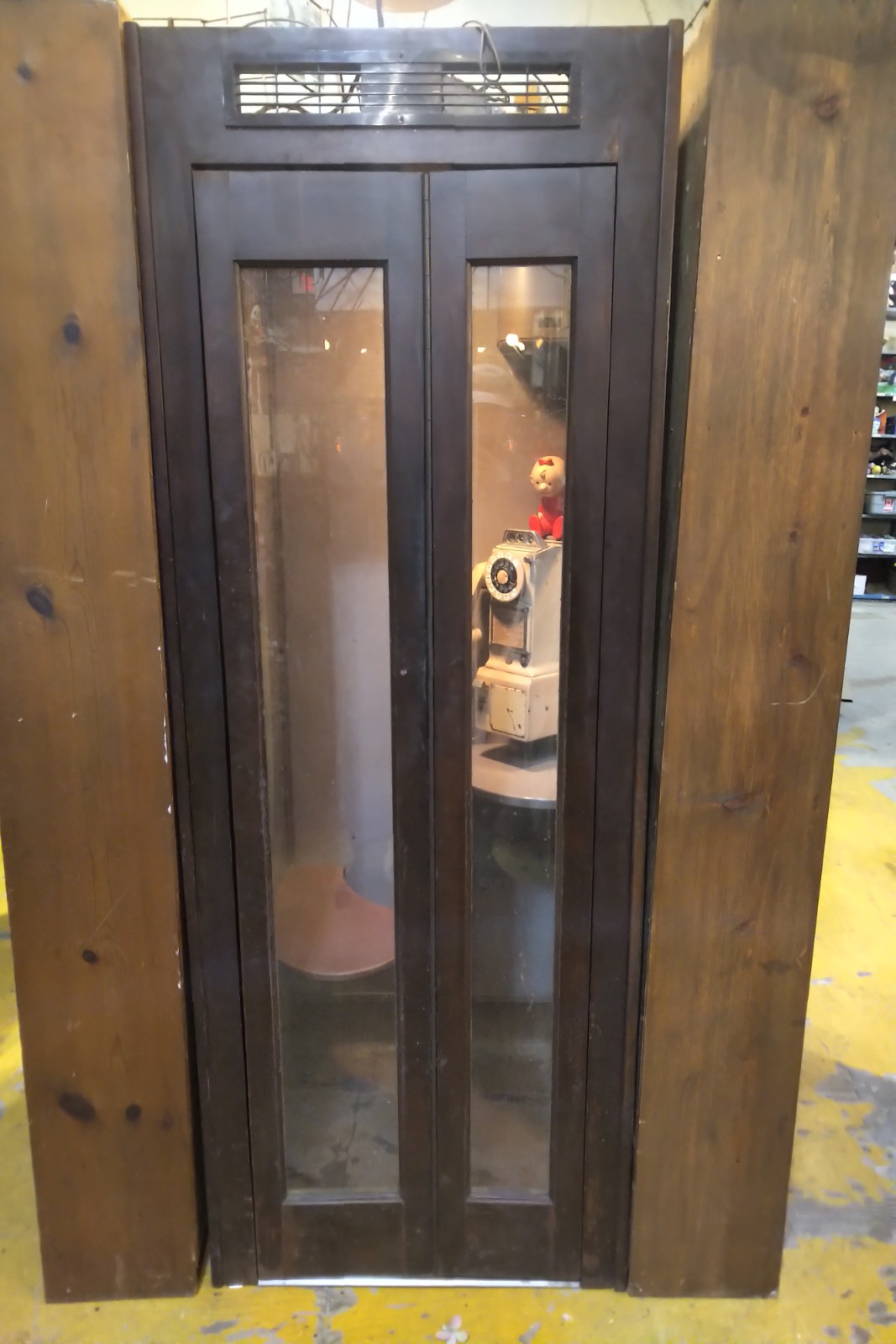
Because we at PhilTel believe that public telephones serve an important role in our society, we’ve seized this unique opportunity to provide free telephone service to this antique payphone so anyone can walk in off the street to make (and accept) free phone calls nationwide. Fortunately, the new owner shares our vision that a fully-functioning free telephone in this beautiful old wooden phone booth will be much more appealing than just having a non-working antique payphone on display, and we’re grateful he’s so supportive of our efforts to make that happen.
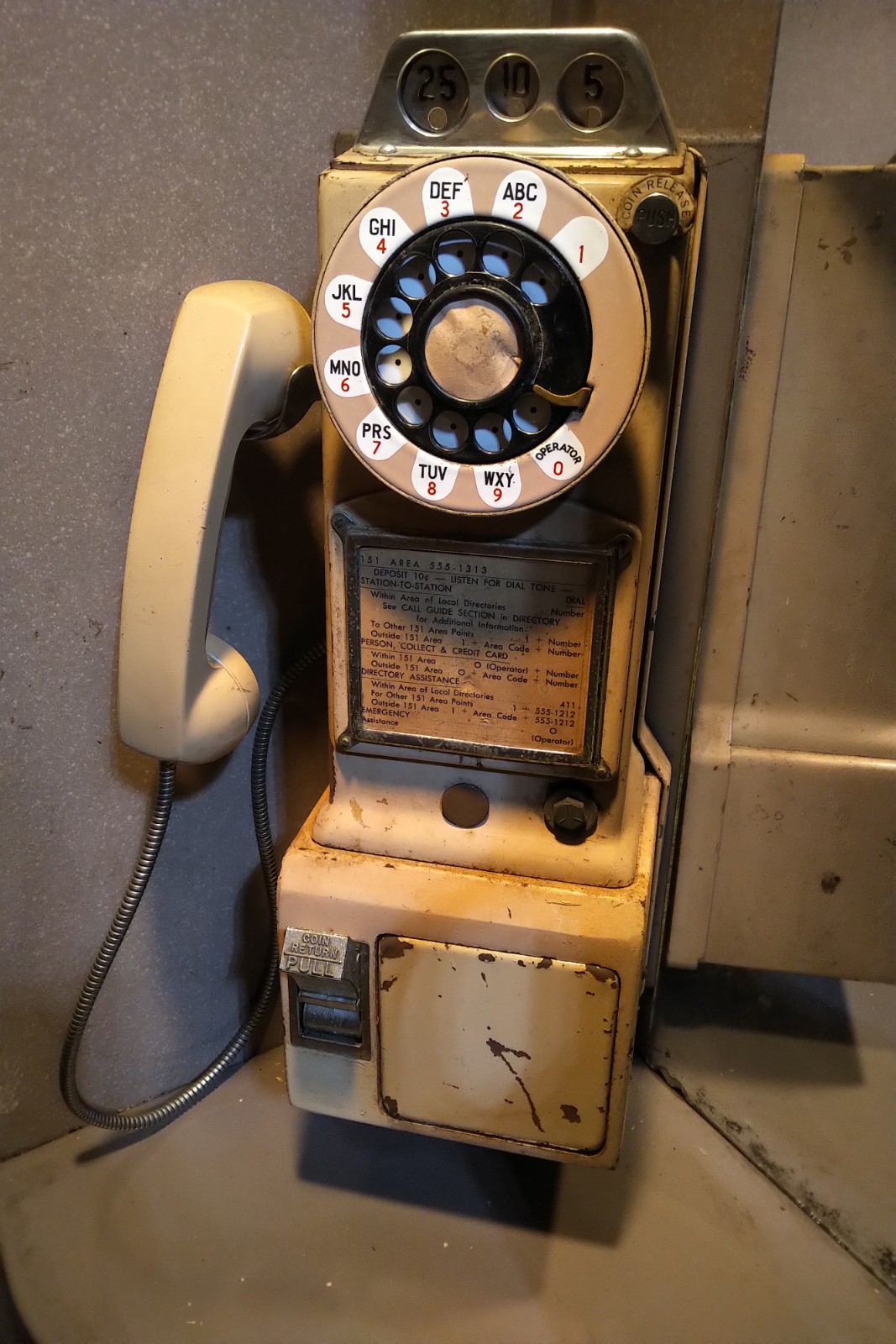
Our initial analysis of the phone was quite promising. With the right tools we were able to open it up and see it had apparently been converted for use on a residential phone line, which is great because we were expecting to have to do that conversion ourselves. We were surprised to find an electromechanical bell ringer in its coin vault. Since payphones of that era didn’t have internal ringers, this confirmed our suspicions that it had already been modified–and saved us from having to find and install an antique external ringer (although we may do that anyway for authenticity.) We were glad to find a short length of telephone cable protruding from the top of this old phone booth, which presumably descends down into the payphone’s innards, so we likely do not have to fish a new phone cable inside the booth.
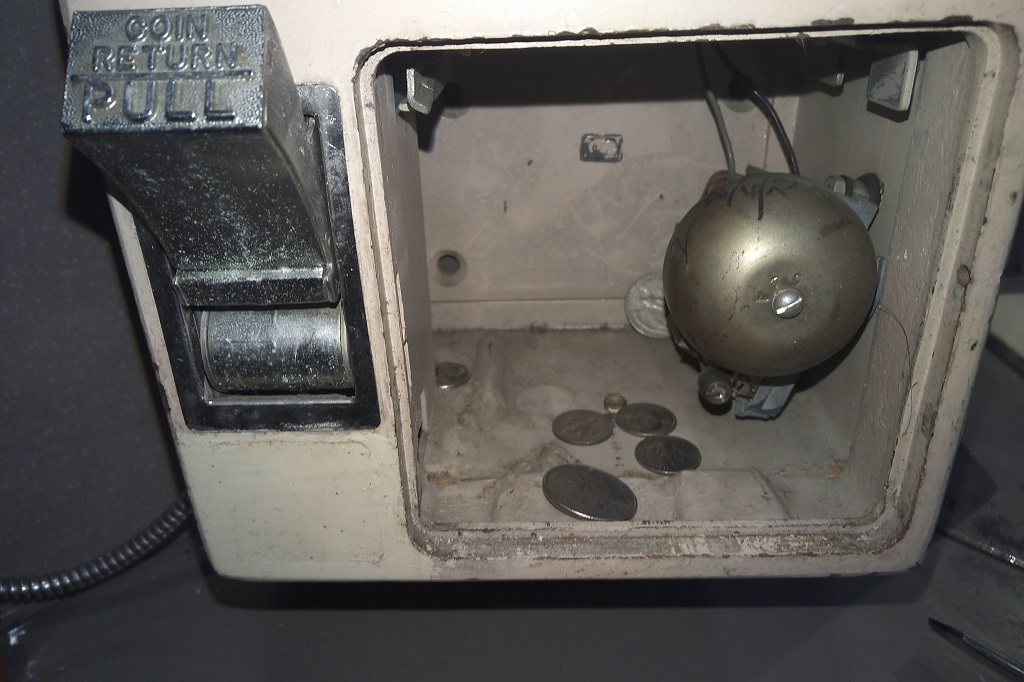
While this phone booth is currently set up in its permanent location, the phone itself can’t be tested until it has a working copper phone line with dialtone service. Like we did with our flagship PhilTel phone at Iffy Books, we’ll provide free dial tone and local & long-distance telephone service from this payphone through a Grandstream Analog Telephone Adapter (ATA) that we’ve provisioned to connect over the Internet to our Asterisk server many miles away–this is our Philtel telephone switch that provides access to the Public Switched Telephone Network (PSTN) and to other hobbyist networks like PhreakNet. Unlike the Grandstream HT-801 ATA we use for our phone at Iffy Books, the Grandstream HT802 supports two phone lines, so one line can be dedicated to the new payphone while the other can be used for the public to try out a collection of other old analog telephones at this location.
We thought we could save time by drop-shipping a new ATA and provisioning it remotely. But after weeks of trial and error and troubleshooting, the ATA still wouldn’t work properly, and we realized an updated V2 model with different hardware/firmware had been shipped to us, which caused some vexing issues that couldn’t be fixed by updating our configuration. After returning that ATA, we obtained and configured a known-working V1 model. After more delays due to USPS losing that new ATA, and some errors caused by a mismatch in our configuration when our VoIP (Voice over Internet Protocol) provider changed connection information, we were finally able to get this ATA working properly to provide dial tone and local and long-distance telephone service.
Soon, we’ll be able to connect this antique payphone to the ATA for full end-to-end testing. The phone booth is a considerable distance from where the ATA will be connected to an existing FiOS router, so we needed a pretty long length of telephone wire to connect them. Despite serious efforts, it’s seems surprisingly impossible to find any beige-jacketed 4-conductor 22-guage solid-conductor phone wire like Bell Telephone Companies used everywhere for inside residential telephone wire. Luckily, Sandman.com found a spool of similar grey-jacketed cable and sent us 200 feet of it. Soon we’ll carefully run that cable along the ceiling, terminate it with RJ11 connectors, bridge the phone and ATA together, and hope for the best!
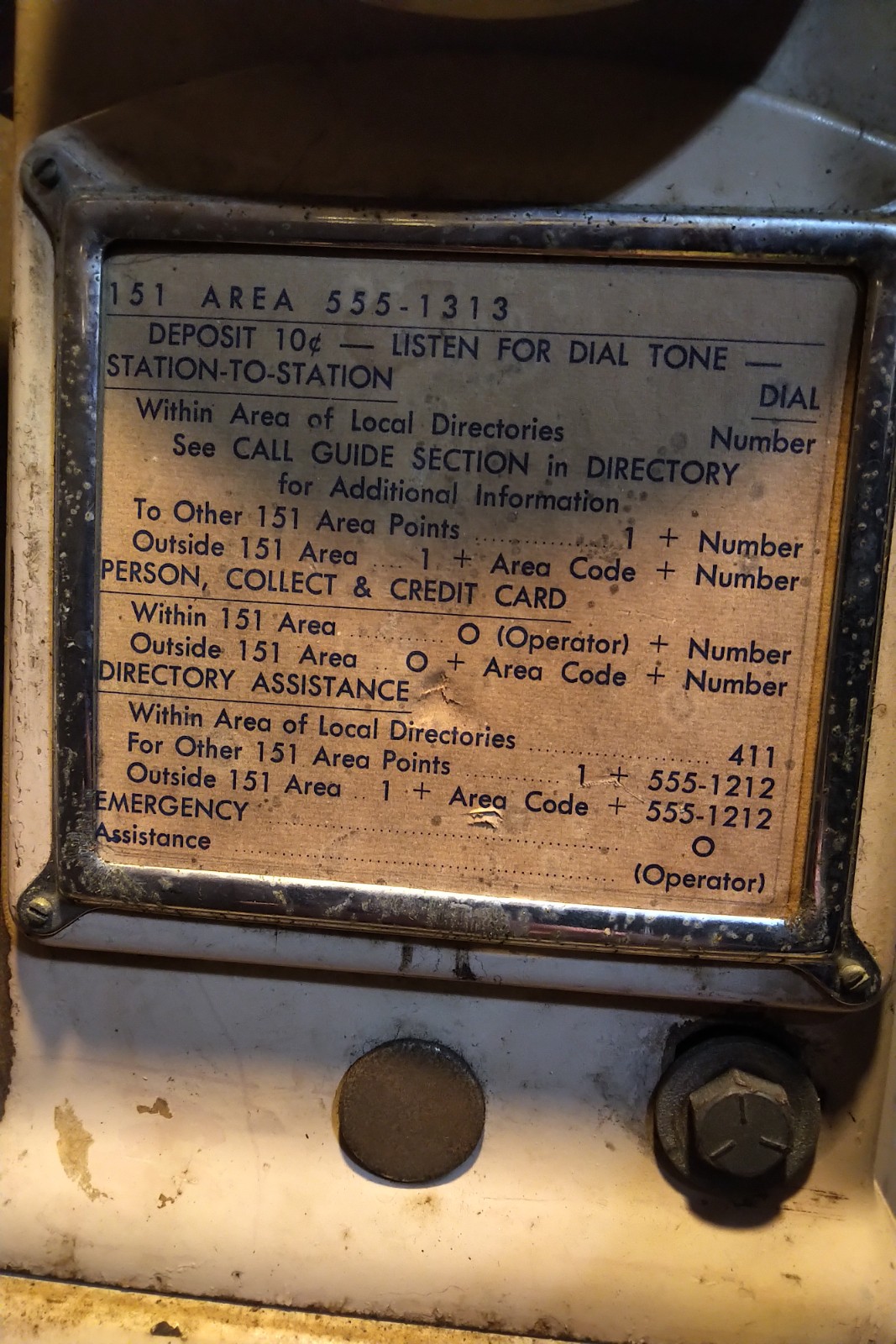
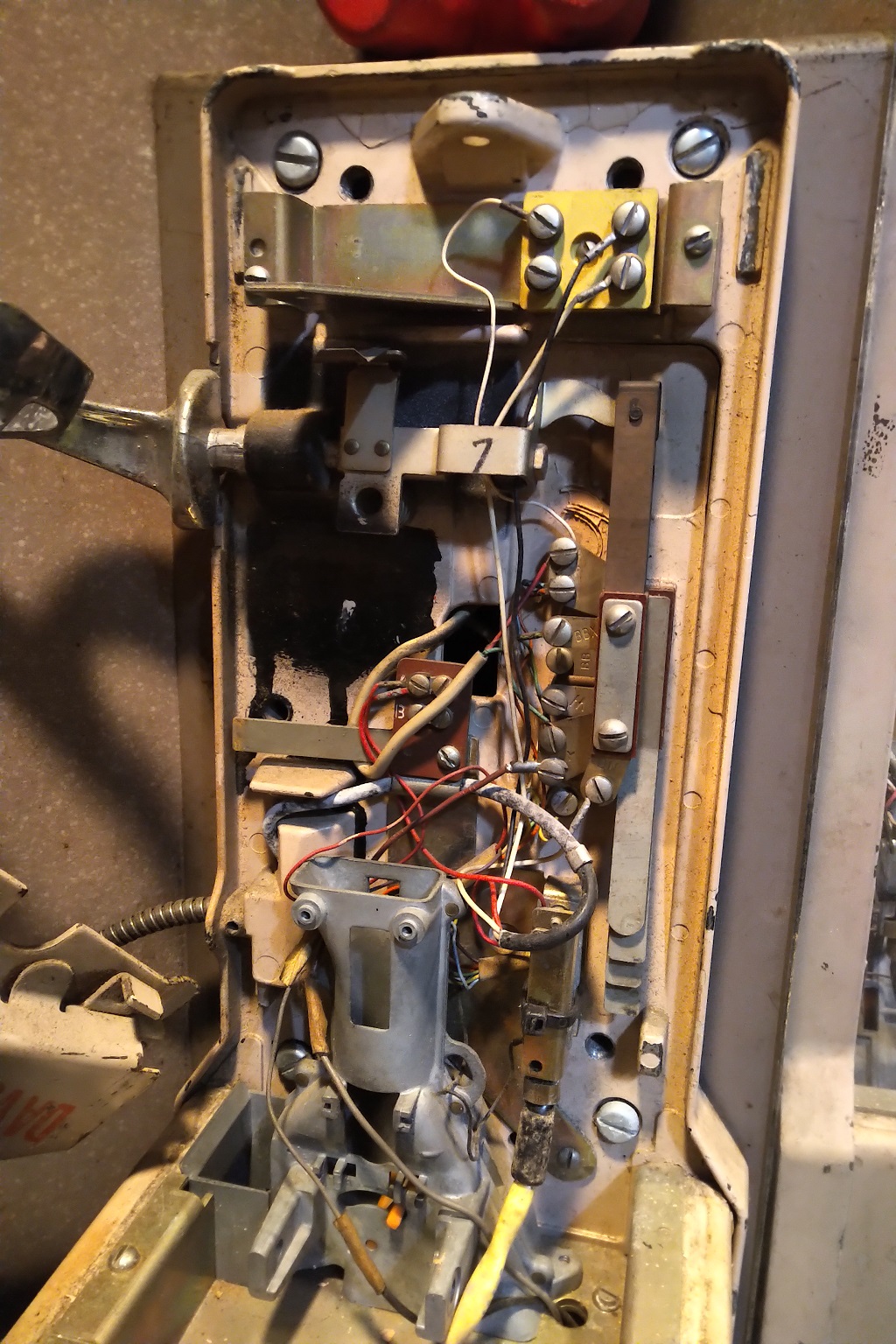
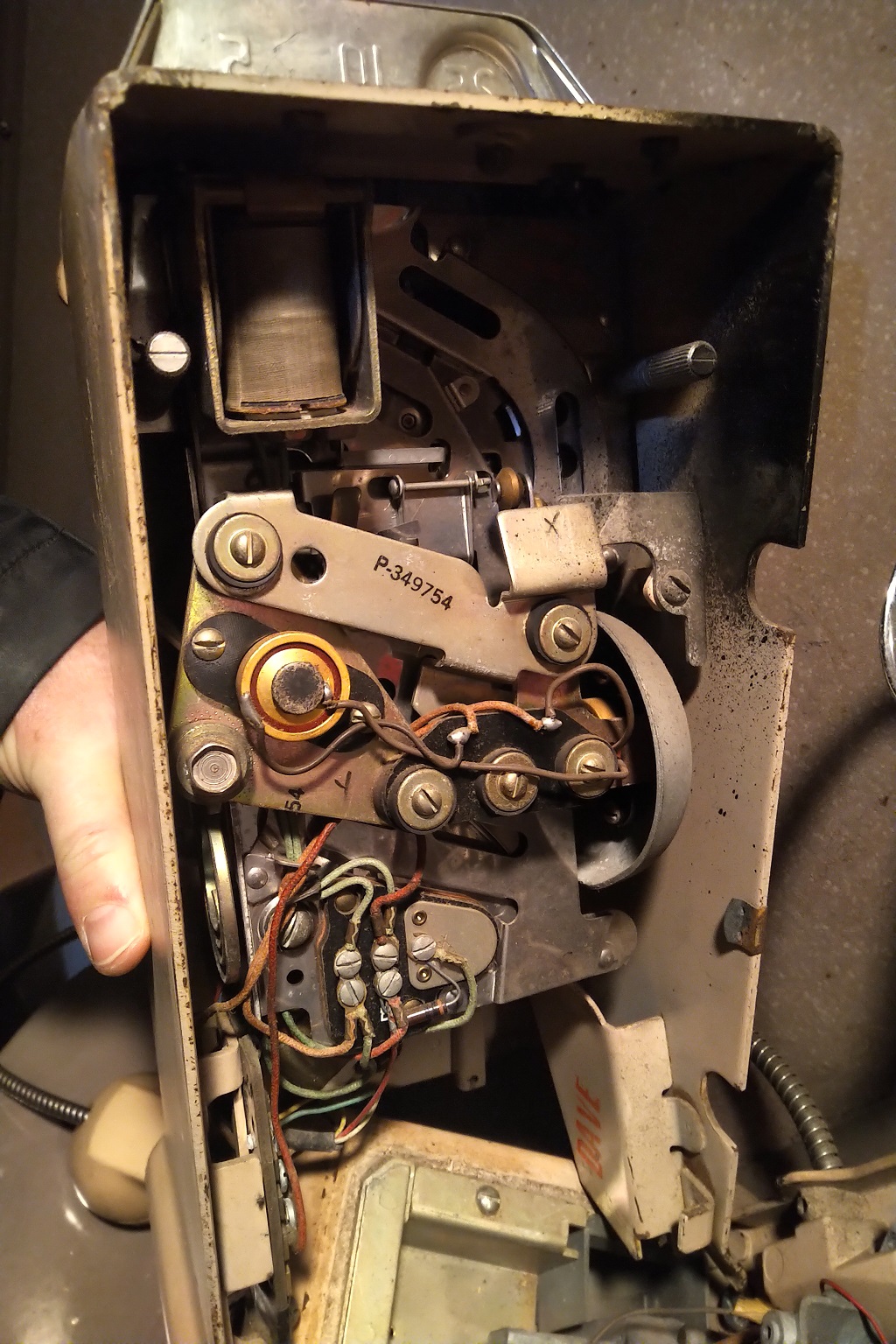
Then this payphone can be fully tested and we’ll be very close to having a fully-working antique 3-slot payphone in a publically-accessible antique wooden phone booth! A special event is being planned with special guests to unveil this phone booth for public use.